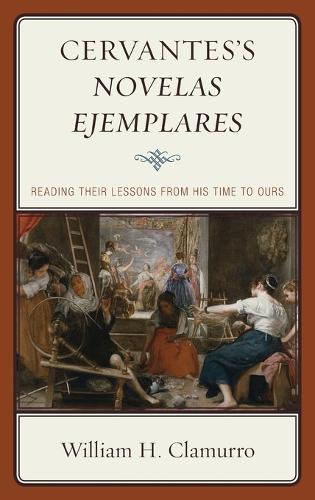
Cervantess Novelas ejemplares: Reading their Lessons from His Time to Ours
(Hardback)
Available Formats
Publishing Details
Cervantess Novelas ejemplares: Reading their Lessons from His Time to Ours
By (Author) William H. Clamurro
Bloomsbury Publishing PLC
Lexington Books
17th September 2015
United States
Classifications
Professional and Scholarly
Non Fiction
Literary studies: c 1400 to c 1600
863.3
Physical Properties
Hardback
142
Width 160mm, Height 234mm, Spine 16mm
349g
Description
Cervantess Novelas ejemplares: Reading their Lessons from His Time to Ours offers a fresh approach to the Novelas ejemplares (1613) of Cervantes in which the twelve novelas are not analyzed individually nor on the basis of generic definitions but rather from a thematic perspective. In this way, certain pertinent themes and problems are explored by grouping the relevant novelas as they dramatize these problems, often leaving the reader with unresolved conclusions, and in other instances offering an affirmative solution. The issues examined include the ironies and injustices of social class, the problem of honra and justice, the complex hostilities and interactions of distinct cultures, and the problem of finding a seventeenth-century work of fiction relevant and stimulating to the twenty-first-century reader.
Reviews
Clamurro is author of Beneath the Fiction (1997), a study of Cervantess 12 exemplary novellas. Here he revisits the narratives to consider recent criticism of the texts and to reflect further on the structure and significance of the individual works and of the collection as a whole. Clamurro always has viewed the novellas as rich, suggestive, and complex, but here he seems more committed to defining multiple options for contextualization, that is, to seeking the tensions inherent in the fictionsand in the age of which they were productsand, he stresses, their relevance for todays readers. He highlights not only a shared intricacy but also a tone of pessimism and cynicism, or at least the potential for negativity, that often has been unnoticed or underestimated. One conclusion of the study is that social and cultural conventions in the Novelas ejemplares are meticulously plotted and presented in a manner that reveals points of contact between early modern Spanish life (and art) and contemporary concerns. Like its predecessor, the book is clearly written, well thought out, and illuminating. Summing Up: Highly recommended. Upper-division undergraduates and above. * CHOICE *
Author Bio
William H. Clamurro is professor of Spanish at Emporia State University.
